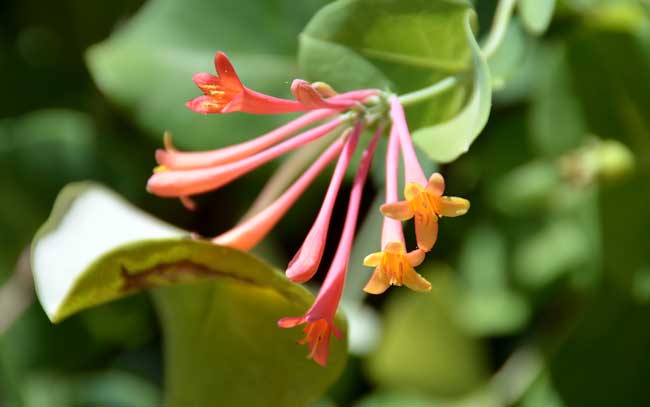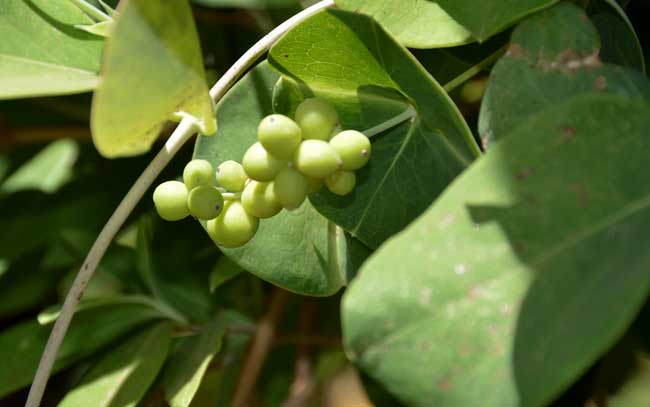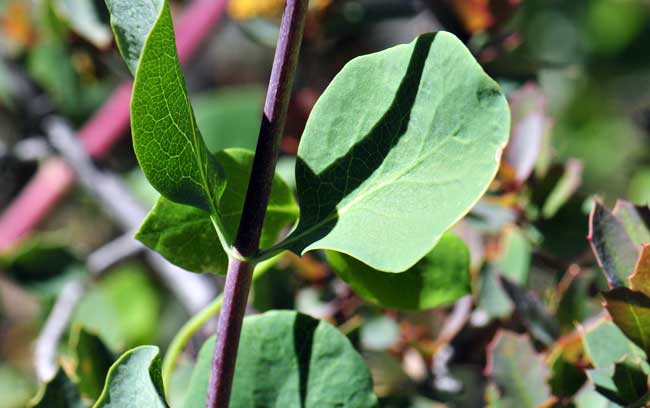Lonicera arizonica, Arizona Honeysuckle



Scientific Name: Lonicera arizonica
Common Name: Arizona Honeysuckle
Also Called: (Spanish: Madreselva)
Family: Caprifoliaceae, Honeysuckle Family
Synonyms: ()
Status: Native.
Duration: Perennial
Size: Up to 4 feet or more (6’).
Growth Form: Shrub/vine; erect woody climbing shrub.
Leaves: Green; opposite, simple, variable shape, oval to elliptical, glandular, lower leaves with a short petiole, upper leaves sessile and perfoliate at the stem.
Flower Color: Red trumpet shaped corolla with orange throat; flowers in terminal clusters of 2 or 3 or whorled clusters, fruits are red berries.
Flowering Season: June to July.
Elevation: 6,000 to 9,000 feet.
Habitat Preferences: Upper elevations, mountains and open coniferous forests.
Recorded Range: In the United States, Arizona Honeysuckle is unique to Arizona, New Mexico and possibly Utah.
North America & US County Distribution Map for Lonicera arizonica.
U.S. Weed Information: No data available.
Invasive/Noxious Weed Information: No data available.
Wetland Indicator: No data available.
Threatened/Endangered Information: No data available.
Comments: Arizona Honeysuckle makes an ideal landscape plant with its beautiful foliage and bright red flowers. The elongated red and orange tubular flowers readily attract hummingbirds. A closely related species, Chaparral Honeysuckle, Lonicera interrupta, is found in the edges of the Upper Sonoran Desert above 4,000 feet.
The genus Lonicera was named to honor Adam Lonicer (1528-1586), a German Renaissance botanist.
In Southwest Desert Flora also see Chaparral Honeysuckle, Lonicera interrupta and Western White Honeysuckle, Lonicera albiflora.

